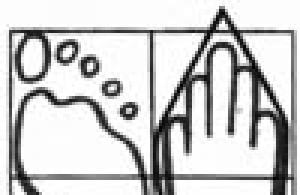Renault Duster (Renault Dacia / Duster) has become a world bestseller, despite constant attacks from competitors and journalists. But, despite a number of updates, the model has already reached 8 years of age and the French automaker had to think about releasing a new version of the crossover, as they had already done for Logan and Sandero.
The French for a long time and carefully concealed their development of the new version popular car, only a few fragmentary rumors reached about what would be a new version, which we talked about and. And finally, Auto.de photojournalists managed to film the final test camouflaged new Renault Duster-2.

What is hidden under camouflage from the eyes of motorists? A possible answer is at the end of the article.
Update popular model always fraught with danger, and after looking at the camouflaged Duster-2, we can say that Renault decided to play it safe in terms of design. Instead of changing everything and being inspired by a 2009 concept or new Captur, the design of the Duster-2 is similar to the evolution of the current model. After all, why change a popular car in the world?
Platform CMF or B0
While it's no secret that Renault is working on a successor for the Duster, there are plenty of rumors about what platform the new version will be based on. For example, Romanian sources say that the crossover will be based on the modern CMF platform, while British magazines claim that the model will only receive a modified version of the existing B0 platform. The CMF platform is known for being already used by many alliance models: Qashqai, X-Trail, Kadjar, Koleos.



Like Renault Captur/ Captur, the new Duster may be available in various country-specific configurations: developing countries (India, South America, etc.) will receive an updated version of the B0 platform, developed markets (Europe) will use a CMF-like platform.
Design, interior, engine range
The exterior design, however, is unlikely to be different in both markets, as was the case with the Renault Captur (Europe) and Captur (developing countries). The interior will contain some useful updates technically and ergonomically, but overall it will remain one of the simplest and no-frills in the SUV segment, as the target audience will remain the same.
Perhaps, under the camouflage, this appearance is hidden:

Estimated exterior of the new generation Renault Duster 2
The 7-seat variant will be called the Grand Duster, for which he had to "grow" from 4.31 m to 4.5 meters in length to increase the wheelbase to accommodate the 3rd row of seats. Volume luggage compartment while increasing to 650 liters.
The valiant 1.5 DCI diesel could give way to a 130 hp 1.6 DCi engine. with significant improvements in terms of efficiency and emissions. As another option, a 1.2-liter turbo-petrol engine with 120 hp is likely to appear. and 0.9-liter TCE 90 hp to expand the range of engines.
When to wait for the sale of the new Renault Duster 2
According to one rumor, a 5-seater Renault Duster new generation will go on sale next year in 2018, and the seven-seat version only in 2019 (to expand the range of proposals).
More detailed information will be known at the presentation, which will take place this fall at the auto show in Frankurt, the new generation of Duster II will be ready for sale at the beginning of next year.
 The new Renault Duster 2017 will grow by 150 mm
The new Renault Duster 2017 will grow by 150 mm
 Nobody has seen this yet: photo of the new Renault Duster 2018
Nobody has seen this yet: photo of the new Renault Duster 2018
 Photos of the interior of the new Renault Duster-2 (2018) leaked to the network
Photos of the interior of the new Renault Duster-2 (2018) leaked to the network
 The debut of the new Renault Duster 2018 in a new body (photo and video)
The debut of the new Renault Duster 2018 in a new body (photo and video)
 The new Renault Duster-2 in all its manifestations: pickup, convertible, police, sports, etc.
The new Renault Duster-2 in all its manifestations: pickup, convertible, police, sports, etc.
 It became known when they show new Renault Duster
It became known when they show new Renault Duster
 Updated Renault Duster at the end of the year (photo)
Updated Renault Duster at the end of the year (photo)
 Renault Duster Dakar made of sand (photo)
Renault Duster Dakar made of sand (photo)
For an ordinary car owner to believe in the uniqueness of his car, an emblem on the hood and a worthy country of origin, confirmed by the cargo customs declaration, are enough. And when asked what platform his car has (colloquially - the base), he will most likely think about the railway or the vegetable store. Incidentally, in vain, especially in our time. If only because in the post-warranty period this knowledge will save a lot of money.
Donors or co-platformers?
The concept of a “platform” in the automotive industry was not born today, but only with the development of the Internet, information began to reach the end user that such a platform exists at all. Moreover, marketers and PR people automotive companies were reluctant to share this fact with customers, especially when more and more often it began to talk about a unified platform. Not only within one brand, but also within the framework of inter-brand cooperation.
In addition to Internet interpretations of "platforms", there is a very clear definition used by auto designers.
Platform - layout diagram motor vehicle(ATS), which combines design and technological solutions and / or an aggregate part, on the basis of which it is planned to design several individual or a whole family of car models.That is, it is a fundamental basis with a number of unchanged parameters, whether it is wheelbase or a track, the location of the power elements of the body or the distance between them, and many other constants. The easiest example to understand the platform is dog breeds. Collie, East European, Caucasian - different appearance and character, but they are all on the “platform” of a shepherd dog. Great Danes have a completely different “platform”, spaniels have a third one. And the “straddleless” mongrel, which does not fall under any canons, is, in fact, the same home-made garage that was assembled from parts various machines. So the presence of a platform in a car is a sign of any, but a breed.
When choosing a car, you need to be prepared for the fact that almost any automaker will never develop a platform for the production of just one model. It is expensive and unprofitable both for the manufacturer and, ultimately, for the buyer. Especially in the mass segment. Exceptions can be except for piece supercars, where the price does not matter.
What then is the question? Buy and enjoy your purchase. An no. If the owner Volkswagen Touareg will be proud that his car was built on the same base as the Porsche Cayenne, then he gave for premium SUV where more money- hardly. Therefore, marketers and sellers are nervous, preferring to remain silent about a fact that is not in any manual for a car.
Because of this, the inexperienced buyer of public stamps still thinks that he is being deceived. Indeed, on the same platform there can be cars that differ very seriously in price, positioning and even class. One of the first "single-platform" shocks Russian consumer experienced in early XXI century, when the Ford concern, which included, in particular, Mazda and Volvo, brought to the market Ford Focus, Mazda3 and Volvo S40 on the C1 global platform.
Ford Focus and Mazda3 - similar in hardware, but different in character
Ford Focus and Mazda3 - similar in hardware, but different in character
The rumor that the whole trinity is the same car, but with a different design, scattered instantly. Having learned about this, everyone rushed to grab the Focus, as the most affordable. A little later, however, they realized that the Mazda3, despite a similar platform and power units(piston rings from the "treshka" are put, in particular, on the 1.8-liter "Focuses" to this day), it rides more interesting. And the Volvo S40, with all its comfort, which the more affordable "brothers" did not dream of, due to the higher cost, could not compete with the brothers in the concern.
The point was that initially motorists did not take into account a simple thing: with all the common key parameters the behavior of the car and its perception are made up of the nuances of the design. Especially if the base is divided not within the same brand, but between different brands that are part of the parent concern. Each of them, of course, has its own engineering and technological developments, its own vision of the product and, as a result, its own customer.
But well-known in Russia and at the same time so different Opel Astra J and chevrolet cruze, united by the Delta II platform from GM, did not scare anyone away. At the same time, each of them clearly fell into its own consumer niche. Not scared away and budget Renault Logan, Sandero, Duster with single platform (B0) Lada Largus. While getting along in the market Lada Granta And Datsun on-DO, Lada Kalina And Datsun mi-DO. True, they play in an approximately equal, super-budget price segment.
There were no misses either. One of the latest is the experience of global cooperation between PSA concerns Peugeot Citroen and Mitsubishi, which released on Russian market not just single-platform, but almost identical Peugeot 4007 crossovers, Citroen C-Crosser And Mitsubishi Outlander XL. Especially in conditions when the latter became the successor of history regular Outlander, and the French rolled out the first crossovers in their history to the market. At the same time in the Jeep Compass, Dodge Caliber, Chrysler Sebring, you can hardly recognize Mitsubishi's GS platform common to all of the above cars - they are too different both externally and on the go.
But in the case of the Franco-Japanese trinity, marketers' attempts to separate consumers into brands, emphasizing the difference in rims or grille, were not particularly successful. The buyer categorically chose the Japanese nameplate according to personal reliability criteria, without heeding any third-party arguments. According to the Avtostat agency, during the period of peak demand for these cars in 2010-2011, 25,140 Outlander XL units were sold, and only 3,880 and 2,810 4007 and C-Crosser cars, respectively.
Even with this result, the alliance tried to squeeze some more profit out of GS. Mitsubishi ASX, Peugeot 4008 and Citroen C4 Aircross, built on it and sold with us to this day, are all the same twins. The ratio of sales - as in the previous case - is not in favor of the French. For very vague reasons, they did not begin to breed crossovers in markets, both in the first and partly in the second case.
If we talk about cross-brand platforms as a means of potential savings for the car enthusiast, then it will act selectively. Before expiration warranty period this will affect the costs of hull insurance (the risk of theft of Porsche is higher than VW), the cost of maintenance and repair (Opel is more expensive than Chevrolet). But after the warranty expires, the owners of more expensive brands will benefit from the purchase of some spare parts.
It will not be difficult to pick up the “original” from a cheaper co-platformer. You just have to dig into the spare parts catalogs on the websites of online stores. On one of the popular resources, we found a front hub bearing kit for the Opel Astra J. In the Opel branded box (catalog number 03 28 021), it is offered at a price of 9509 rubles. In packaging and marked with General Motors (code 13583479, applicability according to the GM catalog for Chevrolet Cruze, Orlando, Opel Astra J), the item costs from 5868 rubles. I.e Astra owner J (we already know that Astra J and Cruze are single-platform within this concern) without looking back can save almost 4 thousand.
And there are many such examples. Yes, parts catalog Volkswagen Group general. It clearly and model-by-model describes the applicability of details. That is, for the same hub, which is identical for approved Audi models, VW, SEAT or Skoda, you won’t have to overpay depending on the brand positioning - it will be under a single catalog number. So when replacing, you can safely dismiss the "original Audi bearing".
The music played for a while
Meanwhile, platforms are living out their lives, giving way to modular designs. "Behind the wheel" has repeatedly written about MQB - a modular scheme that Volkswagen has staked on for all its brands right up to 2018. True, it can no longer be considered a platform in pure form. As we have already said, these are “cubes” from which you can build a platform of almost any class. Audi A3, SEAT Leon, Skoda Octavia, VW Golf, new VW Tiguan, Skoda Yeti and many other models of the concern - all this is MQB.
According to engineers, the total in these cars is from 25 to 40%. So, buying an Audi, you will get 60-75% of it in the form of the same exclusive filling, design, and there is no objective reason for frustration. In addition to the fact that the cost of insurance or service will, of course, be higher than in the case of Skoda. Modularity does not cancel division by consumer segments, and the manufacturer's business becomes much more profitable by reducing the cost of final production.
True, in order to switch to such design and production schemes, very large investments are required. While Volkswagen could afford them, trying to get out of the French crisis PSA concern, who applied the EMP2 (Efficient Modular Platform) modular scheme for new generations of Peugeot 308/408, Citroen C4 Picasso in 2013. The Nissans with their CMF and the Swedes from Volvo, who released the second-generation XC-90 crossover based on Scalable Product Architecture (SPA), did not lag behind. Already in soon the Swedes are preparing to "pull" on this platform all subsequent generations of their cars older than the S60 model. They spent much less on their modernization scheme than competitors from Germany - about $ 11 billion.
Nevertheless, all basic nodes, interfaces, main electronic components in Swedish cars will be uniform. Modules, if necessary, can be scaled - to increase, say, the length of the bottom, the height of the racks, the volume engine compartment to avoid compromises that would have to be made when creating, for example, a sedan and an SUV on a common platform.
Consumer concerns about modular architecture if defects are found, it may require the recall of a huge number of cars, most likely belong to the theory. Firstly, such eminent automakers must have calculated such risks. Secondly, within the mass segment for more than a dozen years there will be time-tested and inexpensive platforms.
At MIAS-2016, this car was shown as a "demonstration of the possible development of the model range", but in fact Lada Xcode- something more. We understand what the future can expect this concept.
Recently, AVTOVAZ has taught us that it represents concept cars for a reason. Yes, the first concept car new era shown in 2012 Lada Xray, did not become a production car - the real X-Ray, as we know, looks different - but it clearly set a new corporate identity that Lada will follow in the near future. XCODE is the second step in the evolution of this style. But, more importantly, it looks much closer to production car than the first concept.
Take a closer look, in XCODE there really is not a single deliberately “conceptual” element that was present in Xray-2012 (just remember its interior), and almost everything, with minor exceptions, looks like it doesn’t need to be adapted to mass production. Moreover, the "Concepts" section appeared on the official website of AVTOVAZ, where all six concept cars shown at MIAS-2016 are present, and X-Code was given the first place in the list.
According to the tradition that takes place with other manufacturers, cars from the "Concepts" section very often migrate over time to the main lineup. In addition to the X-Code, in this section Lada has such cars that will surely become serial - sports and "cross" modifications of Vesta and Xray.

 |
 |
Actually, most of the doubts were dispelled by Nicolas Maure, who at the end of August 2016 told the press that Lada XCODE would appear in the series in five years or even a little earlier, and in model range will take a place between the "SUV" Kalina Cross and the just introduced Xray Cross. By the way, before the advent of the X-Code, the latter is tasked with competing with cars in the fast-growing segment - Hyundai Creta and Renault Kaptur. A little later, in September, Harold Grubel developed this idea, voicing a forecast: in the next few years, up to 50% of the market can be occupied by crossovers and SUVs, SUVs and SUVs. So the Lada XCODE definitely has a future.

From voiced technical solutions- so long awaited by fans of the brand. As for the 4x4 system for new Lada cars, there is still no clarity - whether it will be a transmission borrowed from Renault-Nissan, or developed in-house by AVTOVAZ. But four-wheel drive it will definitely be - both for Xray Cross and serial version xcode.

An interesting situation with the turbo engine: as you know, AvtoVAZ has developments on a 1.4-liter gasoline turbo engine, and moreover, it is also part of the Lada Granta that was tested. It is likely that one of the versions of the serial Lada XCODE will turn out to be a rechargeable hybrid capable of moving on pure electric traction.
The most important question at the moment is the platform of the future crossover. AvtoVAZ claims that the project is at the stage of studying consumer interest, the platform has not yet been determined, and therefore even the exact dimensions of the future car are unknown. But this is hardly entirely true, given the announced timing of the appearance of the model on the assembly line. At the very least, there are already a number of options. Let's try to understand which ones.

The first option is a borrowed new CMF platform Renault-Nissan Alliance. The concept of this platform (or rather, architecture) divides the entire car into five zones - power point, chassis front, rear, cockpit (salon) and electrics / electronics. For each such zone there is a certain set of suitable solutions. According to the "status" of these solutions, the platform is divided into three subspecies - CMF-A, CMF-B and CMF-CD. For the first time, Nicolas Maur indirectly hinted at the use of CMF when he spoke about a compact car for Russia, like - remember, Quid is based on CMF-A. And more precisely, the president of AVTOVAZ pointed to the new architecture of the Alliance already in the context of a conversation about Lada XCODE, saying that instead of the previous borrowed B0 platform, the Lada brand will gradually switch to CMF-B.

On this platform, by the way, are based Nissan crossovers Juke and Renault Duster of the second generation, which will enter the market in 2017. CMF platform option on new crossover Lada possible because it meets the principle of "lean engineering" proclaimed by Carlos Ghosn with the launch of the Renault Kwid and the CMF platform.

The second option is the use of AVTOVAZ's own resources. In September, an interesting phrase came from the mouth of Grubel: "Over the next five years, we will combine the Granta / Kalina and Vesta platforms." It is not yet clear what is behind this (according to one of the versions, XCODE will receive a Kalina body frame, but with the front part of the Vesta platform "implanted" into it), but this is fully consistent with the policy of reducing the number of platforms - now Lada has four of them, not counting the borrowed one B0, it is planned to leave two or three. This is, in fact, the same "economical engineering" - not to develop a new platform, spending engineering resources on it, but to use combinations and upgrades of what is already there. Which, oddly enough, is very similar to the modular approach used in the CMF architecture.

Is it possible that in reality we will see some combination of these approaches - say, can individual parts Lada platforms B (Vesta) enter the CMF "constructor" set? This would correspond to the principles outlined above, and the course towards the maximum possible localization, taken by Nicolas Maure and already being implemented by Harald Grubel, would be quite consistent. However, while such assumptions look too fantastic.
By the way, the name XCODE itself is still quite fantastic and speculative: it’s not at all a fact that the car will be called that in the series. Recall that back in June 2016, AVTOVAZ registered the name “Xray X”, and what is hidden behind it is currently unclear - maybe an all-wheel drive version of Xray Cross, or perhaps just a serial version of XCODE.
But it is known for sure that the new crossover will be implemented Lada system Connect, which integrates the car's multimedia system and smartphone, linking together information, navigation and entertainment services, as well as driver assistance systems: automatic emergency braking, automatic parking, active cruise control and even remote control by car.

Finally, it should be noted that Harold Grubel highlights three technologies that the Lada brand will develop in the coming years: these are new engines, all-wheel drive systems and… automatic transmissions. According to him, developed and already applied on Lada cars the AMT transmission will undergo improvements, and in addition, a certain version of the classic “automatic machine” may appear, moreover, localized in the Volga region.

There are already prerequisites for this: as you know, the Jatco automatic transmission shift mechanism is already being produced in the Togliatti FEZ, which is installed on Granta, Kalina and a couple of Datsun models, also assembled on the VAZ conveyor, and in the future, moreover, as it became known to the site, speech not only about molding plastic components.
So, belonging to the most popular segment in the future, a new (whatever) platform, a well-developed "x-style", a hybrid power plant with a gasoline turbo engine and the ability to drive on pure electric traction, all-wheel drive, automatic transmission, aggregation of vehicle systems with a smartphone and latest systems active driver assistance… Sounds good, so we are waiting for you, serial XCODE!

The third generation Logan family is expected in 2020, according to tradition, the first to be born European versions under the local Dacia brand. And, according to the French edition L "argus, they will say goodbye to the current B0 platform (aka Global Access).
The company is pushed to this by increasingly strict European legislation - the Euro-6 eco-norms that have come into force and the need to equip cars with means active safety like systems automatic braking. Therefore, the new Logan and Sandero will be built on the same modular CMF-B platform as the upcoming Renault hatchback Clio fifth generation (its premiere will take place this fall). Architecturally, this trolley will repeat B0, but engineers initially lay in it unification with other versions of the CMF platform and the possibility of installing modern electronics. According to preliminary data, new Logan will be equipped with a 1.3 TCe petrol turbo engine and a 1.5 dCi diesel engine.
But all this is true only for European cars under the Dacia brand. Logans for less demanding markets (Russia, South America, India) do not require Euro-6 and advanced electronics, so Renault has two versions of the CMF-B platform. European cars will get expensive version HS (High specifications in the diagram), and the rest - a simplified version of LS (Low specifications), which, apparently, has a minimum of differences from the already mastered B0 bogie.

A similar strategy of two platforms Renault already run on crossovers: the European Captur is built on the Clio chassis, and the Kaptur for Russia, South America and India is based on the simpler and more advanced Duster platform. Prior to this, a similar trick was pulled by a related Nissan, rolling a Logan trolley under the Sylphy sedan and eventually getting the Togliatti Almera. It's all going to be what the third generation Logan/Sandero is for different markets will be created in the same way.

Moreover, according to L "argus, the separation of platforms will also affect class C, which will debut in August at the Moscow Motor Show. For Russia, Brazil and China, the company is developing a version on a cheap B0 trolley, and for South Korea- on a more expensive platform. By the way, the new model will not appear in Europe due to the danger of competition with the current SUV. Renault Kadjar(analogue Nissan models Qashqai). Based on this statement, it is easy to estimate that a certain “simplified Kadjar” awaits us, that is, a crossover slightly larger than Qashqai.









